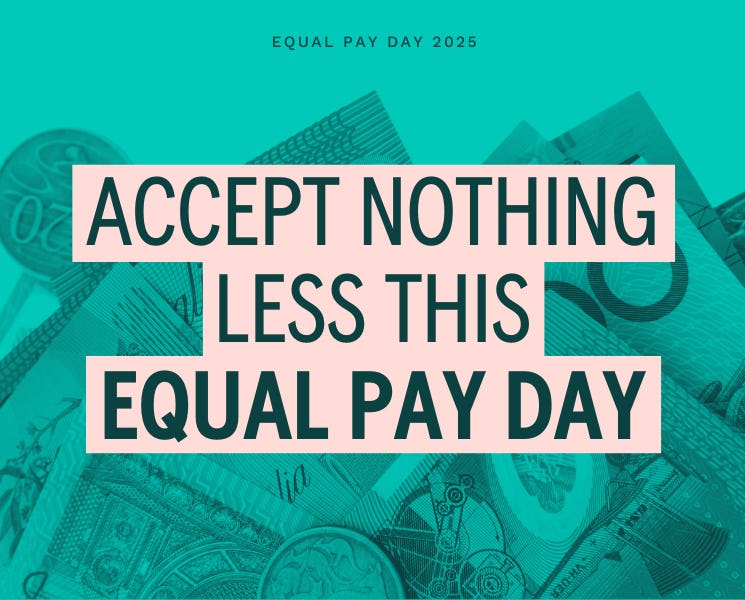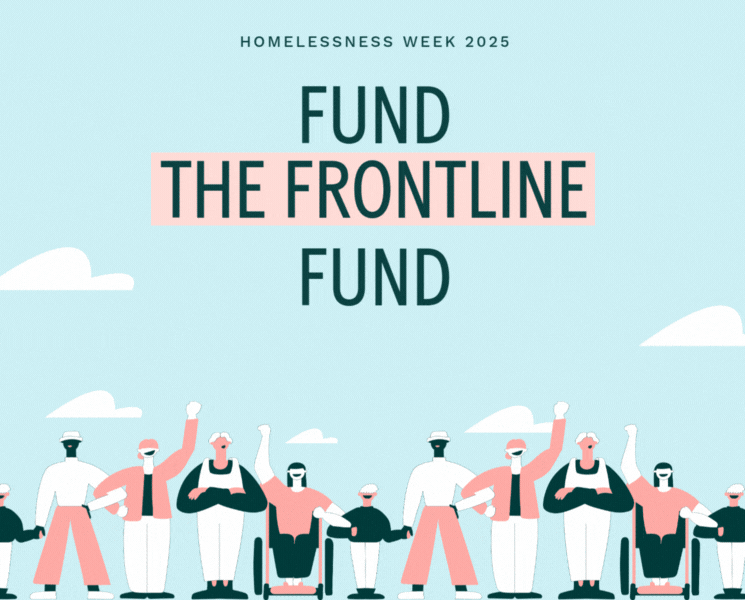Why we need to close the gender pay gap and end the rising inequity, housing stress and insecurity it’s causing for women and gender-diverse people.
Every year, Equal Pay Day rolls around with a new stat, a new date, and a new figure that shows just how far we still have to go.
In 2025, that number is an 11.5% gap in total base pay or the equivalent of ‘50 days’ past the end of the financial year (August 19). That’s more than seven weeks of extra work that women in Australia have to do, on average, to equal what men earned by June 30. Bleak, in anyone’s books.
Of course, it can be easy to glaze over when we see numbers like these. What do they really mean? But we’re here to remind you that, behind those numbers, is a very real systemic crisis whose ripple effects are far bigger than many of us realise. And without urgent action, it will only continue to widen.
Here’s why we need to connect the dots between pay inequity and the bigger picture of rising housing insecurity. Plus, what you can do to help close the pay gaps for good.
Need a little refresher?
The Gender Pay Gap is not the same as ‘equal pay’, or paying people the same for equal or equivalent work, which has been the law in Australia since 1969.
Instead, the gender pay gap is a measure of how we value the contributions of different genders in the workforce. It is not a comparison of like-for-like roles, but rather the difference in the average pay and total remuneration of women and men across employers, industries and the workforce as a whole.
Expressed as a percentage or a dollar figure, a range of factors can drive gender pay gaps, including bias, discrimination and entrenched gender stereotypes, which limits women’s earnings and compounds over a lifetime. For more, visit: The Gender Pay Gap explained ↗
What the data shows us
According to the latest figures from the Australian Bureau of Statistics (ABS) and Workplace Gender Equality Agency (WGEA), the current Gender Pay Gap equates to women earning $12,600 a year less than men, on average, or $242.30 a week.
That gap gets even wider when total remuneration (i.e. bonus pay, overtime, super, additional payments etc) is taken into account, with women earning 21.8% less or just 78 cents for every dollar earned by men. That’s an annual gap of a whopping $28,000, or more than $1 million less over a lifetime. Feeling a bit short-changed? No wonder.
While there have been some incremental improvements this past year, the vast majority of employers still have a gender pay gap in favour of men outside the benchmark target range (±5%). So is there any good news? Well, yes and no…
While we’re starting to get better (more intersectional) data, that data is confirming some pretty unacceptable and uncomfortable truths that reveal the tru-er extent of pay inequity in this country.
The gaps within the gap
In 2025, for the first time, we have national figures on the pay gap experienced by First Nations women. Jobs and Skills Australia, in collaboration with the Centre for Indigenous People and Work (CIPW), recently released a groundbreaking study that found Aboriginal and Torres Strait Islander women earn 40.5% less than white men (cumulative 10 year average).
Introducing what they call the Gender Segregation Intensity Scale (GSIS), they have confirmed what many have suspected for years: work and pay is still highly gendered in Australia, and gendered occupational segregation is difficult as heck to shift.
Not all pay gaps are created equal. And up until this point, there has been very little data to unpack the lived experiences of First Nations women, women from migrant and racially marginalised backgrounds, women with disability, and people from LGBTIQA+ communities. As financial literacy platform Ladies Talk Money puts it as part of their ongoing advocacy campaign calling for more intersectional data: when it comes to the Gender Pay Gap, out of sight not only equals out of mind, it means out of pocket.
Without robust intersectional data, we’re missing the full picture. And without the full picture, we can’t drive real change. So what change is needed and how can you get involved?
The ripple effect of a broken system
The gender pay gap goes far beyond a workplace issue, or even a financial one. And it shows up in more than spreadsheets and data sets, to impact women’s lives in the most persistent and measurable ways.
Make no mistake, the Gender Pay Gap is symptomatic of the disadvantage embedded in our economic systems; evidence of a national crisis of gender and social inequity, which ripples across communities and generations.
It shows up in the types of industries women work in. In who gets promoted and who gets bonuses. It shows up in superannuation balances and retirement savings, rates of home ownership, and the inability to leave unsafe situations. At WAGEC, this is not abstract. It’s our everyday reality:
“Financial insecurity is one of the biggest barriers preventing women from escaping violence. It’s hard to leave if you can’t afford it. This is what makes economic justice and closing the gender pay gap a safety issue, as much as anything.” — Nicole Yade, WAGEC CEO
Women’s homelessness is skyrocketing, especially for older women, with the number of women sleeping rough having doubled in the past year. Alarmingly, almost 45% of women who’ve sought assistance for homelessness in that time have experienced domestic and/or family violence.
That’s not a coincidence. It’s a crisis of structural inequality, fuelled by decades of inaction and a system not built with women’s economic safety and security in mind. And when the gap is this wide, women fall through it.
So, what can we do?
Knowledge is power. But it's going to take action at every level. Tackling women’s economic insecurity requires bold, coordinated change at every level: workplace, community, and government.
In our workplaces:
- Check your workplace’s gender pay gap via WGEA’s Data Explorer
- Set targets for women in leadership and transparent bonus structures
- Advocate for flexible, inclusive working environments for everyone
- Be transparent and accountable for how you’re going to create pay equity
In our government policy:
- Fund way more affordable housing and homelessness support
- Invest in care infrastructure and accessible childcare
- Boost wages in women-dominated industries like aged care and education
- Commit to the collection and publication of intersectional pay gap data
In our communities:
- Challenge gendered stereotypes about money
- Support tailored financial literacy programs for people of all ages and backgrounds
- Back women-led businesses and social enterprises
- Keep talking about the links between pay equity and safety
The bottom line
Women’s economic insecurity isn’t a personal failing, it’s a systemic issue. And when women are safe and secure, we all benefit.
Days like Equal Pay Day are a timely reminder that closing the Gender Pay Gap isn’t just about paychecks, it’s about power, freedom, and safety.
We all have a role to play in building a future where everyone has the financial power to choose safety. So this year, don’t just share the stats, demand change and not a penny less.
Want to take more action?
Donate to WAGEC to help create safer futures for women and children experiencing violence and homelessness →





